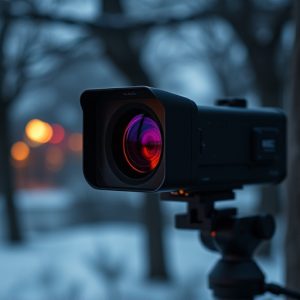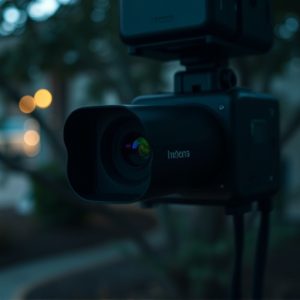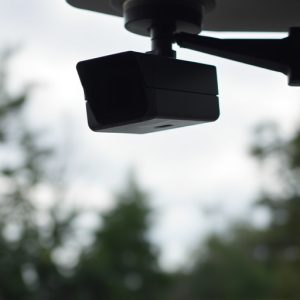RF Detector Sweep: Secure Your Space from Indoor Hidden Cameras
Radio Frequency (RF) detection is a powerful tool for identifying indoor hidden security cameras, wh…….
Radio Frequency (RF) detection is a powerful tool for identifying indoor hidden security cameras, which often transmit signals via RF technology. To detect these devices effectively, users should focus on common areas like bathrooms, bedrooms, and offices. Preparation involves understanding camera placements, calibrating RF detectors, and testing on known sources. By following systematic steps and analyzing results, one can uncover and secure hidden cameras leveraging electromagnetic signal anomalies. Regular sweeps are recommended for proactive security measures against new installations.
Uncover hidden threats with an RF detector sweep—a crucial tool in modern security. This tutorial guides you through the process of identifying indoor hidden security cameras, ensuring your space remains secure. From understanding radio frequency (RF) detection and its role in spotting covert surveillance devices to executing precise sweeps, this step-by-step approach covers all bases. Learn the art of analyzing results and securing your environment effectively.
- Understanding RF Detection and Hidden Cameras
- Pre-Sweep Preparation for Maximum Effectiveness
- Executing the RF Detector Sweep
- Analyzing Results and Securing Your Space
Understanding RF Detection and Hidden Cameras
Radio Frequency (RF) detection is a powerful tool in identifying hidden security cameras, especially those placed indoors. These devices operate by scanning for electromagnetic signals emitted by various electronic devices, including hidden cameras that often use RF technology for transmission. By understanding how RF works and its applications in camera detection, users can stay ahead of potential privacy breaches.
Hidden cameras have evolved to become more sophisticated, with many utilizing wireless connections and compact design, making them nearly invisible. However, this also means they are susceptible to RF detection methods. When searching for indoor hidden security cameras, focusing on common areas like bathrooms, bedrooms, offices, and any spaces offering line-of-sight to sensitive information or activities is crucial. RF detectors can then be strategically placed to identify and neutralize these covert surveillance devices, ensuring a safer and more secure environment.
Pre-Sweep Preparation for Maximum Effectiveness
Before initiating an RF detector sweep, thorough preparation is key to achieving maximum effectiveness in detecting hidden security cameras. Understanding indoor hidden camera placement is crucial. Cameras can be strategically positioned behind walls, inside light fixtures, or even integrated into everyday objects like paintings and clocks. To counter this, ensure you have a comprehensive knowledge of the area you’re scanning, making note of any unusual installations or recent renovations. Disassemble potential hiding spots (if safe to do so) for closer inspection.
Additionally, calibrate your RF detector to its highest sensitivity setting. Test it on known sources to ensure accurate readings. Keep in mind that different types of cameras may emit unique radio frequency signals, so be prepared to adjust your detection techniques accordingly. A methodical approach, combined with the right tools and knowledge of indoor hidden security camera placement, will significantly enhance your chances of successful detection.
Executing the RF Detector Sweep
To execute an effective RF (Radio Frequency) detector sweep, you’ll first need to understand where hidden security cameras are most commonly placed indoors. Given their covert nature, these devices tend to operate on specific radio frequencies, making them detectable with the right equipment. Start by focusing on common areas such as doors, windows, and walls—favorites for discreet camera placement due to their accessibility. Utilize your RF detector according to the manufacturer’s instructions, sweeping the area systematically to pick up any anomalies in electromagnetic signals that could indicate a hidden camera’s presence.
Remember, indoor hidden security camera placement often leverages common power lines and Wi-Fi networks as transmission pathways. Your RF detector should be able to identify these signals as well, helping you pinpoint the source of interference. As you sweep, take note of any peculiar readings or consistent hotspots that could suggest a hidden device. This process requires patience and precision, but with practice, you’ll become adept at detecting even the most cleverly concealed surveillance equipment.
Analyzing Results and Securing Your Space
After completing a thorough RF (Radio Frequency) detector sweep, analyzing the results is crucial to identifying and securing potential hidden cameras. The data collected can reveal unique radio signals emitted by various devices, including those associated with surveillance equipment. By mapping out these signals, you can pinpoint exact locations within your premises where hidden security cameras might be installed. This process involves careful examination of peak signal strengths and frequency patterns, helping you to visualize the layout of hidden cameras like a complex web.
Once identified, securing your space becomes the next step. It’s essential to take immediate action to disable or remove these devices to protect your privacy. This may involve sealing off access points, reinforcing physical security measures, and even consulting with professionals who specialize in indoor hidden camera removal. Regular RF detector sweeps can also be implemented as part of an ongoing security strategy, ensuring that any new hidden cameras are detected promptly.
Detecting hidden cameras using RF (radio frequency) technology is a powerful tool for ensuring indoor security. By understanding how RF detection works and preparing thoroughly, you can effectively sweep your space. Executing the sweep involves methodically scanning for any active devices, while analyzing results helps identify potential risks. Securing your environment based on these findings ensures a safer, more private living or working space, making this tutorial an invaluable guide for indoor hidden security camera placement.


